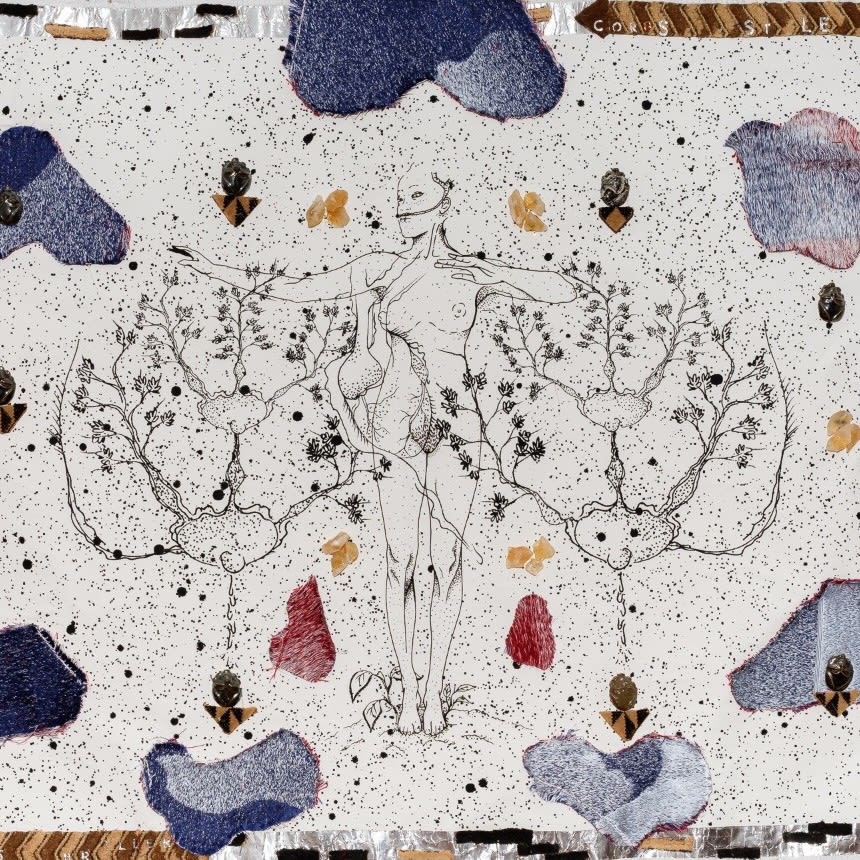Corps à cordes : Vibrations et résonances @ Musée d'Art et de Culture Soufis MTO: Marie-Claire Messouma Manlanbien
Curated by Elena Sorokina and Simona Dvorak
Curatorial advisors: Nataša Petrešin-Bachelez and the Initiative for Practices and Visions of Radical Care
Resonant: Bodies, Songs, and Strings
This exhibition weaves together echoes, vibrations, transmissions, and shared energies between Sufism and contemporary artistic practices. At its heart lies the setâr—a lute with fine and delicate strings – embraced by Sufis as a symbol of refinement and inner cultivation (letâfet in Arabic, Persian, and Turkish), and a vessel for spiritual transformation.
A resonant body, the setâr becomes metaphor: a vibrating heart stretched between heaven and earth. It inspires the exhibition to attune itself to the vibratory nature of emotion and to the social and ecological processes of healing, preservation, and transmission. Through diverse modes of listening—oral traditions, rituals, dreams, visions, and song—the body is understood as a vessel: a carrier of forgotten histories and an encoder of embodied knowledge.
Featuring objects and practices that exist at the intersection of art, care, spirituality, and sonic thinking, the exhibition engages with sound that exceeds the merely audible. It invites a deeper, more sensorial form of listening—one that is intimate, intuitive, and transformative.
The museum building itself can be seen as a resonant body: a unique sonic architecture in dialogue with the nature that surrounds it. The flowing Seine, the symbolic geometry of the garden, and the presence of aromatic and medicinal plants create a constellation of sensory connections. These elements invite the public to open their perception—to imagine their own bodies as instruments, as mediums for embodied, situated, and active listening.

